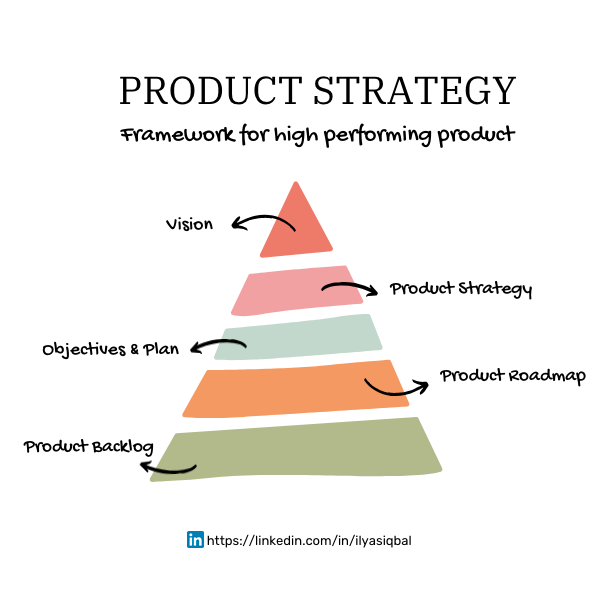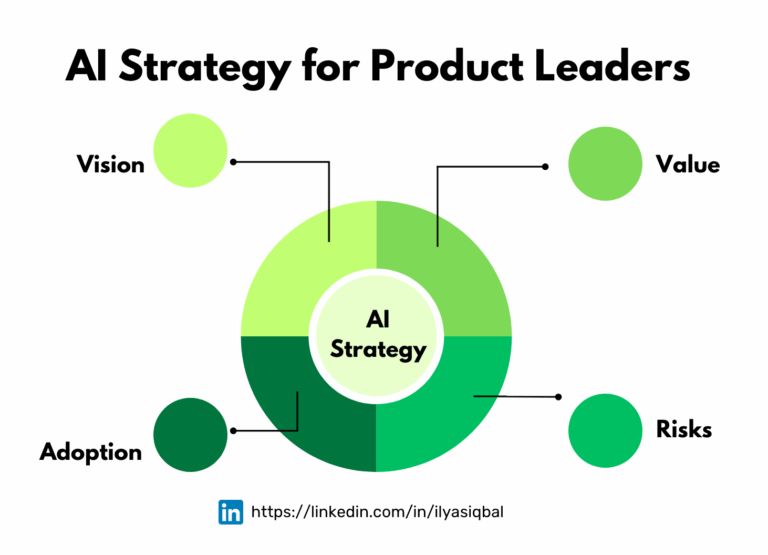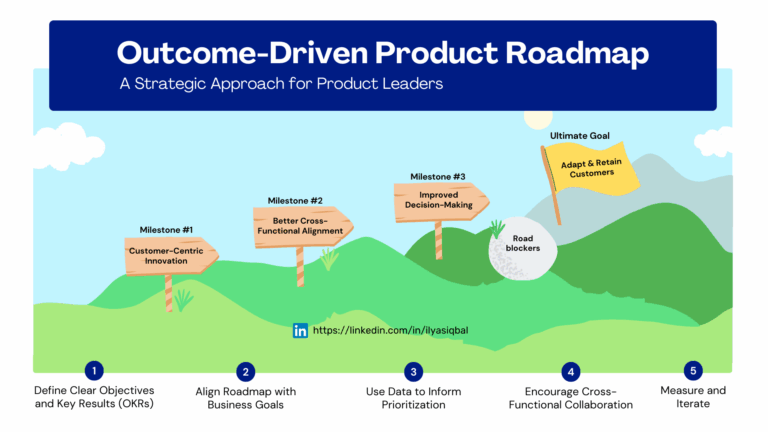
Generally speaking, strategy itself is a plan of action designed to achieve a long-term goal or objective. It involves making choices about where to compete and how to win by allocating resources effectively.
What is Product Strategy?
A product strategy is the blueprint that guides a company’s approach to developing, launching, and scaling its products in the market. It defines the vision, objectives, and roadmap for a product, aligning it with the company’s overall mission and market needs. A well-crafted product strategy not only helps in creating a competitive edge but also ensures long-term sustainability and profitability.
Also read: Outcome-Driven Product Roadmap: A Strategic Approach for Product Leaders
Importance of Product Strategy
For a leaders, designing a high-performance product strategy is crucial for several reasons:
- Market Segmentation
- A well-defined product strategy helps establish the company’s offerings from competitors by focusing on unique value propositions and core strengths within a specific segmentation.
- Customer-Centric Innovation
- It ensures that products are developed with a deep understanding of customer pain points, behaviors, and expectations, leading to better market fit and adoption.
- Resource Allocation
- By defining priorities and strategic objectives, it optimizes investments in R&D, marketing, and sales to maximize return on investment.
- Risk Mitigation
- It reduces the risk of market failure through data-driven decisions, thorough market research, and continuous iteration based on customer feedback.
- Scalability & Growth
- A robust product strategy lays the foundation for future expansion, enabling the company to scale efficiently while maintaining product quality and customer satisfaction.

Key Drivers of a High-Performance Product Strategy
Leaders must focus on several key drivers to build an effective product strategy:
- Customer Insights & Market Trends
- Conducting in-depth market research and gathering real-time customer feedback helps in designing products that cater to evolving needs and preferences.
- Competitive Landscape
- Analyzing competitors’ strengths, weaknesses, pricing strategies, and market positioning allows companies to identify opportunities for differentiation and strategic advantage.
- Technology & Innovation
- Staying ahead with the latest technological advancements and integrating innovative solutions into the product enhances differentiation and market appeal.
- Agility & Adaptability
- The ability to quickly pivot based on market feedback, emerging trends, and unforeseen challenges ensures the company remains competitive and relevant.
- Cross-Functional Collaboration
- Aligning teams across product development, marketing, sales, and customer support fosters seamless execution and ensures that all departments work toward the same strategic objectives.
Key Benefits of a High-Performance Product Strategy
- Continuous Stakeholders’ Alignment
- Weather it’s your sales, marketing or IT teams, a clearly defined product strategy helps all the team members to have a vision alignment and a base-level understanding of a broader picture of company-wide goals.
- Enhanced Customer Satisfaction
- A strong product strategy ensures that products align with customer expectations, leading to higher satisfaction, positive reviews, and long-term loyalty.
- Increased Revenue Growth
- By targeting the right market segments with well-positioned and value-driven products, companies can maximize revenue potential and profitability.
- Operational Efficiency
- A clear and focused strategy minimizes inefficiencies in development, marketing, and distribution, optimizing resource usage and reducing waste.
- Stronger Brand Positioning
- A well-defined product strategy reinforces the company’s brand image in the market, establishing credibility, trust, and a loyal customer base.
- Sustainable Competitive Advantage
- Continuously evolving and improving products based on strategic insights and customer needs ensures long-term industry leadership and resilience against market fluctuations.
Conclusion
For C-suite/Presidents/VPs, designing a high-performance product strategy is not just about creating a roadmap—it’s about ensuring alignment with customer needs, market trends, and business goals. A strategic approach that incorporates customer insights, innovation, agility, and collaboration will lead to sustained growth and competitive success. The key to winning in today’s dynamic market lies in a well-executed, data-driven, and customer-focused product strategy.









